Solar eclipse of February 24, 1933
| Solar eclipse of February 24, 1933 | |
|---|---|
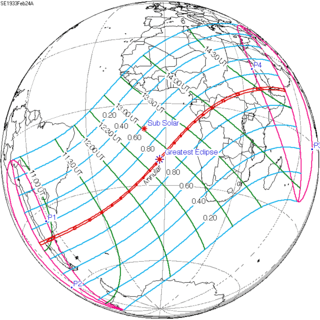 Map | |
| Type of eclipse | |
| Nature | Annular |
| Gamma | -0.2191 |
| Magnitude | 0.9841 |
| Maximum eclipse | |
| Duration | 92 sec (1 m 32 s) |
| Coordinates | 20°48′S 2°06′W / 20.8°S 2.1°W |
| Max. width of band | 58 km (36 mi) |
| Times (UTC) | |
| Greatest eclipse | 12:46:39 |
| References | |
| Saros | 129 (47 of 80) |
| Catalog # (SE5000) | 9358 |
An annular solar eclipse occurred on February 24, 1933. A solar eclipse occurs when the Moon passes between Earth and the Sun, thereby totally or partly obscuring the image of the Sun for a viewer on Earth. An annular solar eclipse occurs when the Moon's apparent diameter is smaller than the Sun's, blocking most of the Sun's light and causing the Sun to look like an annulus (ring). An annular eclipse appears as a partial eclipse over a region of the Earth thousands of kilometres wide. Annularity was visible from Chile, Argentina, Portuguese Angola (today's Angola), French Equatorial Africa (parts now belonging to R. Congo and Central African Republic), Belgian Congo (today's DR Congo), Anglo-Egyptian Sudan (parts now belonging to South Sudan and Sudan), Ethiopia, French Somaliland (today's Djibouti), southeastern Italian Eritrea (today's Eritrea), and Mutawakkilite Kingdom of Yemen, Aden Protectorate and Aden Province in British Raj (now belonging to Yemen).
Related eclipses
Solar eclipses of 1931-1935
This eclipse is a member of a semester series. An eclipse in a semester series of solar eclipses repeats approximately every 177 days and 4 hours (a semester) at alternating nodes of the Moon's orbit.[1]
| Solar eclipse series sets from 1931-1935 | |||||
|---|---|---|---|---|---|
| Descending node | Ascending node | ||||
| 114 | September 12, 1931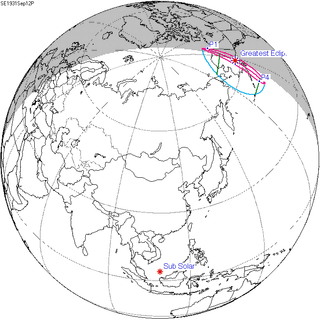 Partial |
119 | March 7, 1932 Annular | ||
| 124 | August 31, 1932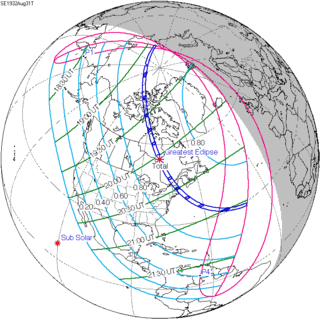 Total |
129 | February 24, 1933 Annular | ||
| 134 | August 21, 1933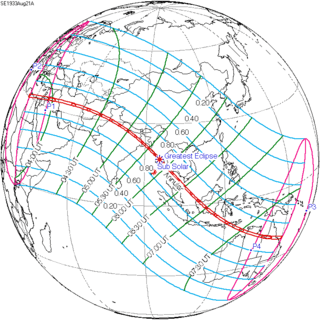 Annular |
139 | February 14, 1934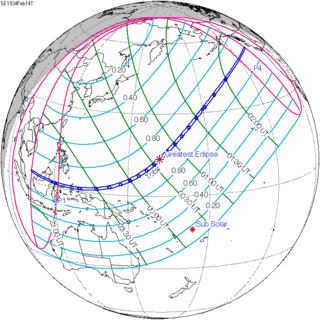 Total | ||
| 144 | August 10, 1934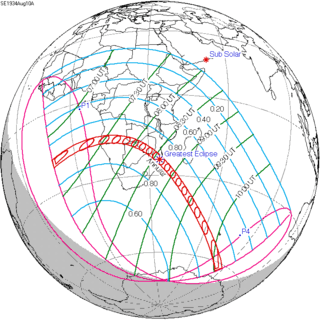 Annular |
149 | February 3, 1935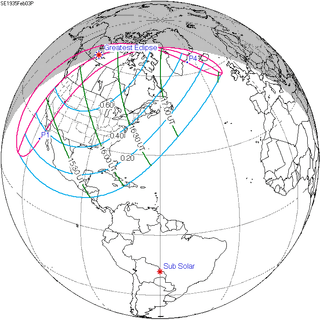 Partial | ||
| 154 | July 30, 1935 Partial | ||||
Saros 129
It is a part of Saros cycle 129, repeating every 18 years, 11 days, containing 80 events. The series started with partial solar eclipse on October 3, 1103. It contains annular eclipses on May 6, 1464 through March 18, 1969, hybrid eclipses on April 8, 2005 and April 20, 2023 and total eclipses from April 30, 2041 through July 26, 2185. The series ends at member 80 as a partial eclipse on February 21, 2528. The longest duration of totality was 3 minutes, 43 seconds on June 25, 2131 .[2]
| Series members 46-56 occur between 1901 and 2100: | ||
|---|---|---|
| 46 | 47 | 48 |
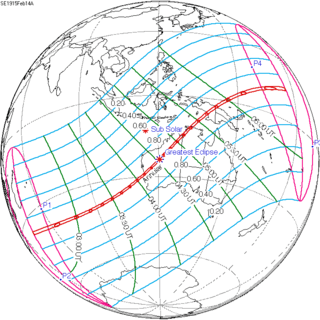 February 14, 1915 |
 February 24, 1933 |
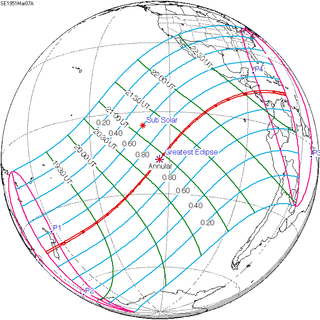 March 7, 1951 |
| 49 | 50 | 51 |
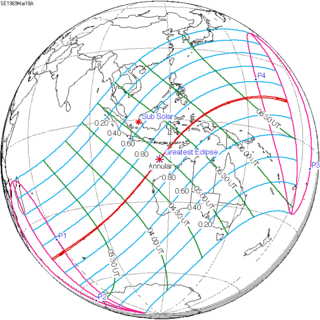 March 18, 1969 |
 March 29, 1987 |
 April 8, 2005 |
| 52 | 53 | 54 |
 April 20, 2023 |
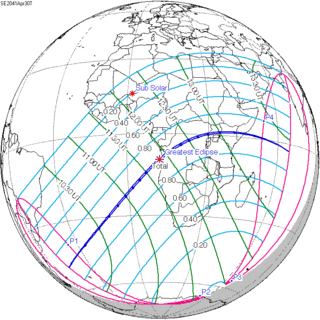 April 30, 2041 |
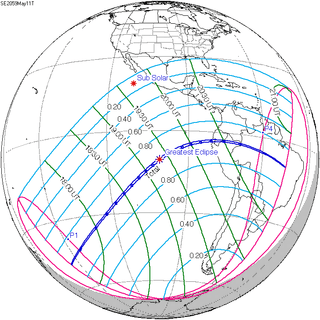 May 11, 2059 |
| 55 | 56 | |
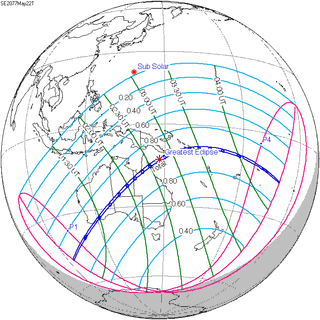 May 22, 2077 |
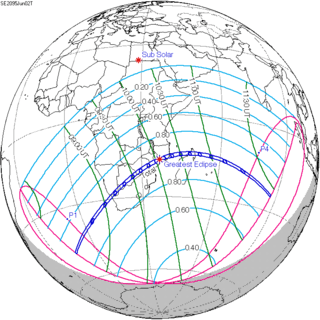 June 2, 2095 | |
Notes
- ↑ van Gent, R.H. "Solar- and Lunar-Eclipse Predictions from Antiquity to the Present". A Catalogue of Eclipse Cycles. Utrecht University. Retrieved 6 October 2018.
- ↑ Espenak, F. "NASA Catalog of Solar Eclipses of Saros 129". eclipse.gsfc.nasa.gov.
References
- Earth visibility chart and eclipse statistics Eclipse Predictions by Fred Espenak, NASA/GSFC
| Wikimedia Commons has media related to Solar eclipse of 1933 February 24. |
